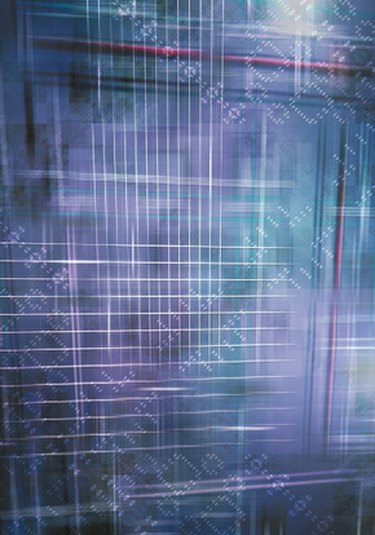
Banks use a wide range of computers to carry out regular, day-to-day operations. Computers allow banking personnel to efficiently carry out transactions, process customer needs, forecast future trends, prepare internal and external reports, communicate with key participants and generate profits. Banking computers include large mainframe computers--which are often large enough to fill entire rooms--to smaller, hand-held personal digital assistants.
Mainframe Computers
Video of the Day
Mainframe computers that are used in banking institutions store data pertaining to client records, domestic operations and other vital processing information. A large bank with numerous branches may have a mainframe computer in its central headquarters and linking terminals located in each of its branches. One of the greatest advantages of a mainframe computer for the banking sector is its ability to perform time-sharing. Time-sharing allows multiple users to access the same computer (and its resources) simultaneously. Mainframe computers have incredibly fast data-processing speeds and in-built fault tolerance mechanisms, reduce labor costs, and support a wide range of workloads and uninterrupted processing. According to "Understanding Computers: Today and Tomorrow, Comprehensive," mainframe computers are sometimes referred to as enterprise-class servers or high-end servers. Examples of mainframe computers used by banks include Fujitsu-ICL VME and BS2000 machines.
Video of the Day
Minicomputers
Minicomputers are a class of computing machines that range in size between large mainframe computers and smaller, personal computers. They function as Internet servers and network servers in banking operations. According to "Telecommunications: A Beginner's Guide," minicomputers allow banks to shift from centralized to distributed processing. Banks use minicomputers as file storage systems, to run email systems and perform Internet operations. The typical minicomputer is capable of supporting more than 64 terminals. Examples of minicomputers used in banks include the Wang Laboratories 2200 and VS series and Nova from Data General.
Personal Computers
Individual users typically employ personal computers to carry out operations. Personal computers, or microcomputers, either function as part of a larger wide area network (WAN) or local area network (LAN), or as independent, self-contained, devices. PCs used in the banking sector are programmed to run spreadsheet, word processing and database software, in addition to web browsers and email clients. Microcomputers typically used in banks include tablet PCs, notebooks and laptops, desktop computers, palmtop computers, programmable calculators and personal digital assistants.
- The University of New Mexico: Computer Types
- Carnegie Mellon University School of Computer Science: Types of Computers
- University of Missouri: Bank Tellers and Computers
- Southwest Museum of Engineering, Communications and Computation: Banking and Computers
- "Understanding Computers: Today and Tomorrow, Comprehensive"; Deborah Morley; 2009
- "Telecommunications: A Beginner's Guide"; Hill Associates Inc; 2002